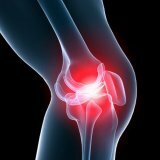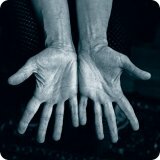Epicondylitis: what it is, symptoms, causes and treatment
Content
- What is epicondylitis?
- Causes of occurrence
- Types of epicondylitis
- Symptoms
- Epicondylitis stages
- Diagnostics
- Epicondylitis treatment by stages
- Disease prevention
- Forecast
- Related Videos
What is epicondylitis?
A disease of a degenerative-dystrophic nature, localized in the area of the elbow joint, originating in the places of muscle attachment to the epicondyle of the shoulder bone. Depending on the place of localization, it can be external and internal.
This ailment is characterized by the presence of stable pain symptoms in the elbow and forearm, although there are no distinct functional disorders. Three quarters of this disease occurs in the right hand.
Inflammation of the elbow joint, although it does not lead to a complete loss of a person's ability to work, significantly worsens the quality of life.
If the treatment is not timely, the destruction of the cartilage tissue and tendon occurs, the process of inflammation appears in the nearby organs.
Causes of occurrence

Epicondylitis is an occupational disease resulting from constant physical overload and stretching of the tendon, as a result which, in its tissues, microcracks are formed, inflammation of the ligaments occurs, and connective tissue replaces damaged cells.
Gradually, the tendon increases in size and becomes more sensitive to various loads.
The main factors provoking tendon inflammation elbow joint:
- repeated ghosting and withdrawal of the forearm together with extension and flexion of the elbow (typical practice for athletes, people playing a musical instrument, seamstresses, painters and masons);
- direct trauma or microtrauma in the elbow area;
- inherited connective tissue dysplasia;
- osteochondrosis of the cervical or thoracic regions and arthrosis of the elbow joint;
- osteoporosis;
- age-related changes in the skeletal tissue of the female and male population after 40 years;
- blood circulation disorders in the joint area;
- one-time strong muscle strain.
Types of epicondylitis
There are several types of this disease:
- Lateral epicondylitis elbow joint (external) - inflammation of the site of attachment of the tendons to the outer epicondyle of the bone. This problem characteristic of the type of occupation in which there is a great tension of the extensor muscles located on the outer side of the forearm.
- Medial epicondylitis elbow joint (internal) - inflammation of the site of attachment of the tendons to the internal epicondyle of the humerus, with the involvement of the ulnar nerve. This disease is caused by monotonous, light movements that involve the flexor muscles of the wrist.
- Traumatic epicondylitis - systematic injury to the tendons when performing repetitive actions of the same type. Companions of this disease are cervical osteochondrosis, arthrosis of the elbow and ulnar nerve damage. This occurs after 40 years, due to a decrease in the regenerative capacity of tissues.
- Post-traumatic. Occurs during rehabilitation after acquired sprains or dislocations of the joint, while ignoring the therapeutic requirements and the hasty resumption of enhanced actions by the affected joint.
Symptoms

At the onset of the disease, discomfort is observed in the form of mild periodic pain radiating to the hand, as well as a burning sensation in the elbow region and in the forearm region.
Then the painful sensations become continuous, there are difficulties in performing any activity.
Read also:Rheumatic arthritis: what is it, causes, symptoms, diagnosis and treatment
X-rays cannot detect any clinical changes in the bone, there is no swelling or redness in the elbow region.
With physical exertion, the pain becomes more intense, over time, active muscle is lost strength, although passive actions (extension and flexion) by another person do not give unpleasant sensations pain. In addition, with this pathology, there are sensations of numbness and tingling in the elbow area.
To recognize lateral epicondylitis of the elbow joint, you can use a simple handshake, which leads to severe pain. The concentration of pain falls on the outer surface of the elbow joint, pain sensations appear when the forearm is extended.
When you press on the painful area detected during movement, there is not strong pain sensation. Feeling of adjacent tissues does not lead to pain.
In the case of medial epicondylitis of the elbow joint, pressing on the internal epicondyle reveals severe pain, which increases with pronation of the forearm.
The sensation of pain is observed when flexing the elbow joint. The pain is aggravated by flexion of the forearm and is localized on the inner side of the elbow joint.
When a milking-like movement is imitated, the pain intensifies many times over. The development of both external and internal epicondylitis is very often chronic.
Stages of epicondylitis
Inflammation of the elbow joint is acute or subacute. The disease turns into a chronic form if treatment was not started on time or is completely absent:
- At the acute stage of the disease, severe, constant pain captures the forearm area, the hand becomes exhausted. If the patient tries to fold his fingers into a fist with the arm extended, severe pain occurs.
- At the subacute stage, the characteristic pain in the forearm occurs a month after the onset of the disease, the muscles become weak. The first pain occurs during physical exertion of the hand.
- The chronic stage is characterized by constant aching pain that intensifies at night, depending on the meteorological conditions. There is severe muscle weakness. From time to time, the remission of this disease alternates with exacerbations.
Diagnostics
After the onset of the characteristic symptoms of epicondylitis, a person needs to seek medical attention. The decisive moments for establishing a diagnosis are interviewing and clinical examination of the patient.
The main distinguishing feature of this disease is pain in the joint only with active physical activity; with passive flexion and extension of the joint, the sensation of pain is not observed.
X-ray examination for epicondylitis is prescribed in extreme cases and is meaningful only in the chronic course of this disease by identifying osteoporosis and bone hardening. With external epicondylitis of the elbow joint, there are no changes. In addition, the following tests are performed on examination:
- Mobility test. It is necessary to fix the patient's elbow, while turning the hand to the side. After turning the hand in the opposite direction, overcoming the resistance of the medical worker's hand, severe pain appears.
- Welt's test. The patient extends both arms forward while simultaneously turning the open palms up and down. The arm with the affected area will noticeably not keep up with the healthy limb.
Read also:Takayasu syndrome (nonspecific aortoarteritis)
Ancillary examinations are carried out in cases where there is a likelihood of other diseases. To exclude a fracture of the epicondyle, an x-ray is taken. In the event of a fracture, there is tissue edema in the articular area.
With arthritis and arthrosis, vague pain occurs in the joint, and not in the epicondyle zone, passive movements in the joint are painful, there is swelling in the damaged area. To make a diagnosis, ultrasound and X-ray of the joint are done, inflammatory components are determined by blood analysis.
At pinched nerve there is neuritis with a disorder of sensitivity in the affected area and a decrease in muscle strength.
If there is concern about the development of epicondylitis in young people, it is imperative to exclude joint hypermobility caused by congenital weakness of the connective tissue. The presence of hypermobility can be indicated by the presence of flat feet (transverse and longitudinal), increased joint mobility, frequent sprains and back pain.
For differentiation tunnel syndrome, during which is accompanied by numbness of the fingers and prolonged pain, magnetic resonance imaging is prescribed.
Epicondylitis treatment by stages
Symptoms and treatment of this pathology are inextricably interdependent. Depending on how long the disease lasts, at what stage is the pathological transformation tendons and muscles, as well as the degree of dysfunction of the elbow joint, complex therapeutic actions. Such treatment pursues the following tasks:
- elimination of pain in the affected area;
- regeneration of local blood circulation;
- resumption of full-fledged movements in the affected joint;
- prevention of necrosis of the muscles of the forearm.
In the first stage of treatment, it is very important to keep the affected area at rest. The patient will need to refuse to perform actions that lead to joint tension for a period up to 2 weeks.
In case of severe acute pain, it is recommended to fix the elbow in a stationary state with a light plastic splint for 8-10 days. The elbow joint is secured at an 80 degree angle and the arm is suspended from a bandage.
When treating epicondylitis of the elbow joint in a chronic form, the affected joint should be fixed with a bandage only during the day, the bandage is removed at night.
Then the patient is prescribed medication. Anti-inflammatory non-steroidal ointments and gels such as:
- nise;
- diclofenac;
- fastum gel.
They are used 3-4 times a day for two weeks.
For prolonged pain, they resort to glucocorticosteroids (hydrocortisone, prednisolone, betamethasone), using once (maximum 2 times) for a course of treatment in the form of an intramuscular injection into the area of the affected joint.
Injections of anesthetics are also used (lidocaine, ultracaine) to relieve the patient of pain.
In the case of epicondylitis that has arisen after any injury, cold should be applied to the affected area for the first days.
Read also:What is rheumatoid arthritis, symptoms and treatment
The next stage of treatment will be the implementation of physiotherapy measures. In the acute phase, the following are carried out:
- magnetotherapy (6-8 sessions);
- infrared laser radiation (12-15 procedures);
- diadynamic therapy (5-7 sessions);
- rarafin and ozokerite (up to 10 sessions).
At the end of the acute phase, the following is attributed:
- electrophoresis with novocaine or potassium iodide;
- Bernard currents;
- extracorporeal therapy;
- warming compresses.
After eliminating the pain syndrome, the patient is shown therapeutic exercises. To do this, with the help of a healthy hand, you need to slowly bend the wrist of the sore arm, which is in a straightened position, until a slight pain in the elbow. Hold this position for a few seconds, shaking the brush.
To prevent muscle atrophy, physical therapy, massage, mud therapy, air baths and acupuncture are indicated for the patient.
If the treatment of epicondylitis of the elbow joint with all of the above methods does not bring the desired result and lasts more than 3 months, the patient is shown surgical intervention, which consists in removing the affected part of the tendon in the area of its attachment to the bone.
In the period after the operation, physiotherapy exercises and physiotherapy measures are indicated.
With chronic epicondelitis, it is recommended to change the type of activity or quit sports, which have a detrimental effect on the muscles of the forearm.
Disease prevention
To prevent the appearance of medial or lateral epicondylitis of the elbow joint, the following guidelines should be followed in daily life:
- before training, athletes should definitely warm up, and use bandages and elbow pads to fix the elbows; correctly select high-quality sports equipment;
- when performing work that can lead to the formation of this pathology, massage of the elbow and forearm should be performed every day;
- monitor the dosage of the load on the forearm, choose the optimal working posture, pause in work;
- in the presence of cervical osteochondrosis, monitor its timely treatment;
- regularly use vitamin preparations.
- eating foods containing collagen to increase the elasticity of tendons (beef, sea fish, eggs, nuts, dairy products).
- minimize the use of foods that interfere with the absorption of calcium and its entry into bone tissue and tendons (fatty foods, chocolate, coffee, radish and sorrel).
Forecast
The prognosis of epicondylitis is favorable if the person has not ignored the symptoms of the acute stage of this disease, and it has not turned into a chronic form.
Currently, it is impossible to completely cure epicondylitis, but if you seek help in time, use an integrated approach in its treatment, observing all preventive measures, you can achieve a stable remission.
Applying all of the above methods of treatment, the general condition of the patient will improve significantly, and he will be able to return to his usual and favorite type of activity.



